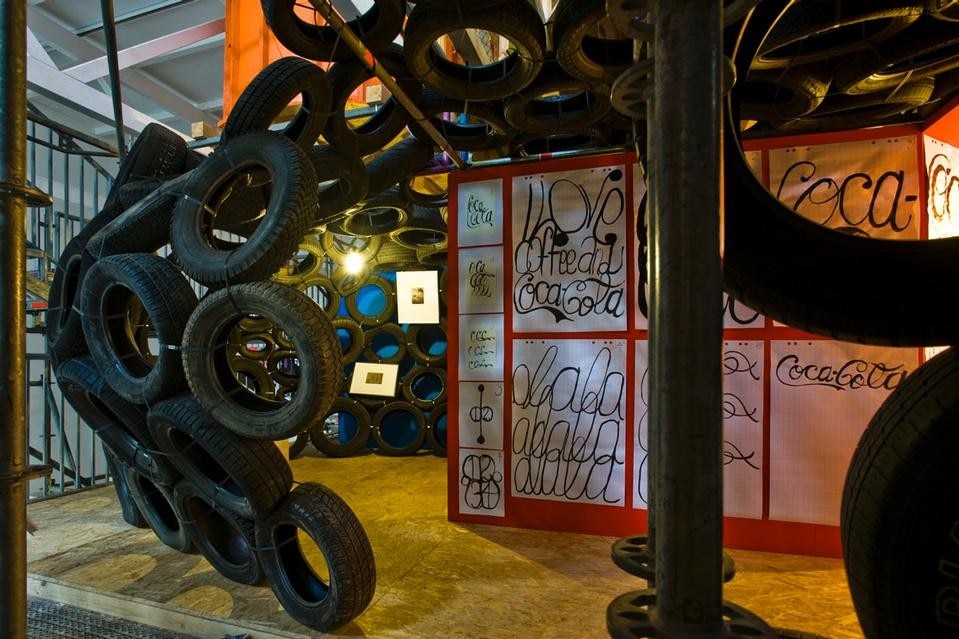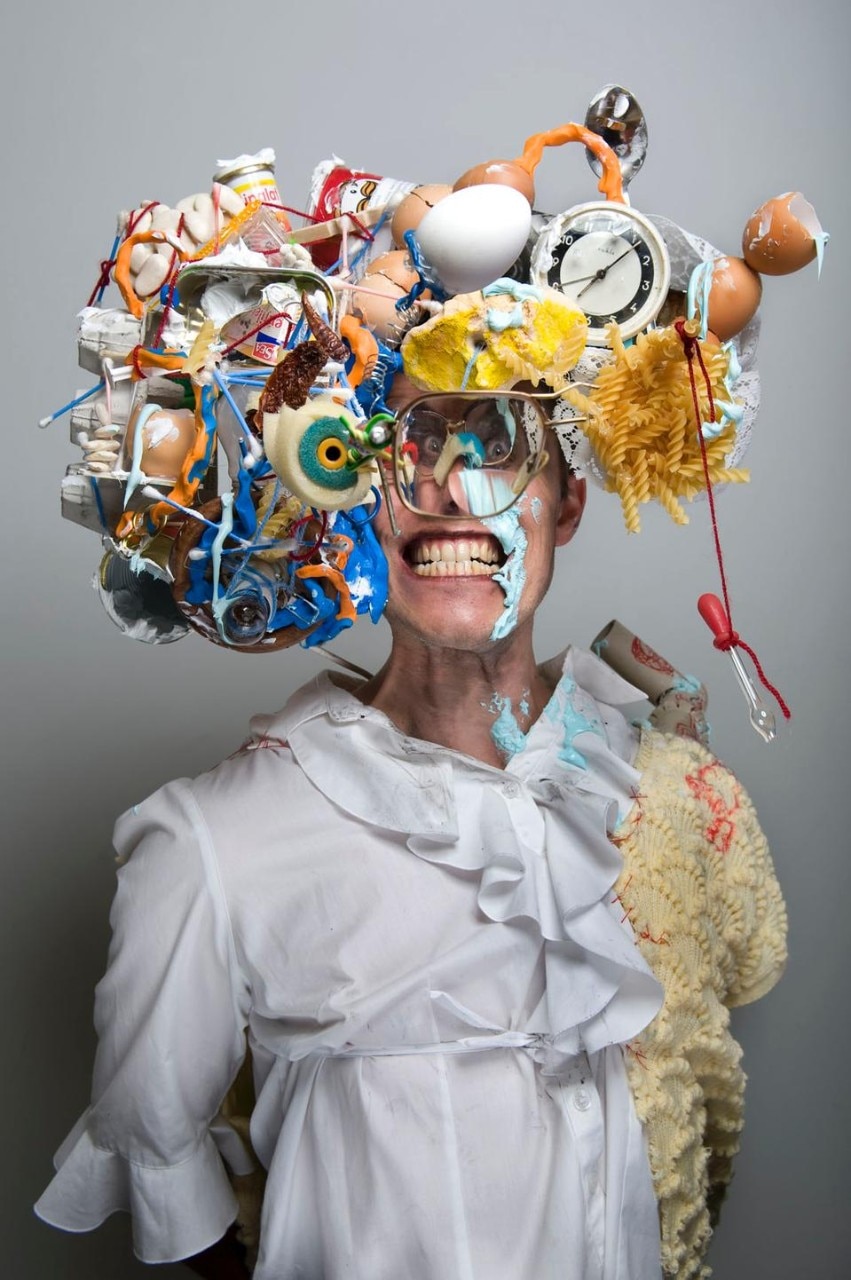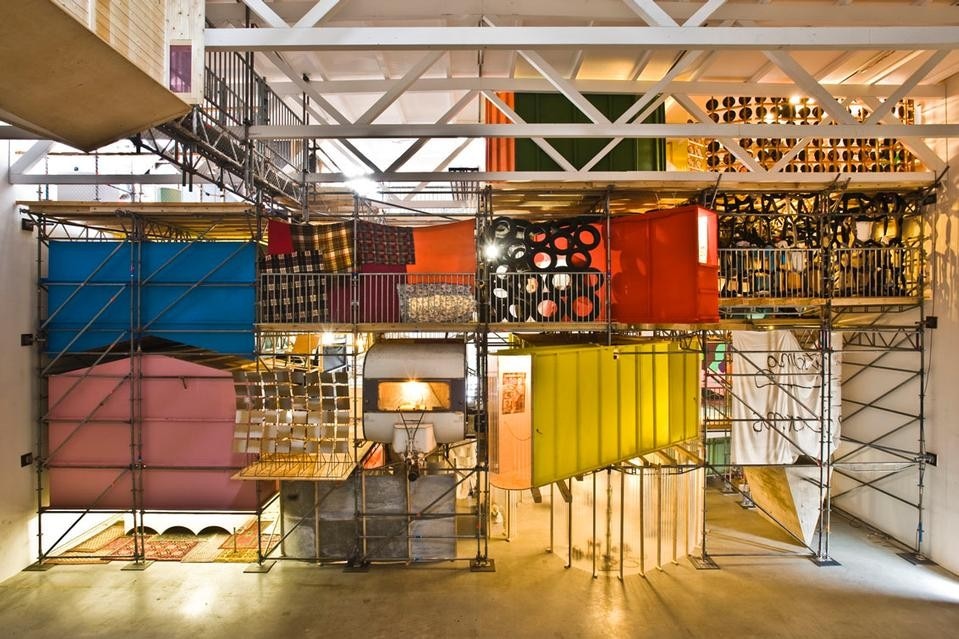For FischGrätenMelkStand, John Bock has developed a masterful meta-structure within which he installs works by 63 artists, architects, and composers. Besides installations, films, models, and sculptures, there are also historical film props, music scores, books, and fan items. The herringbone in the title refers to the symmetrical design of this type of automated device used in dairy farming.
The eleven-meter-tall steel construction creates a range of spatial situations over four levels, linking the individual works into a kind of Gesamtkunstwerk, or total artwork. The dimensions of the walk-in installation are almost those of a Berlin tenement block, with just under 150 square meters of floor space on each level. The makeshift-looking architecture of the rooms fitted into this framework consists of jumbled materials like corrugated iron, wood, car tires, blankets, socks, or burnt pizzas.
Unlike the classic white cube, this scenario offers the works on show anything but a neutral setting. Within a structure that is functional and grotesque in equal measure, the artworks fuse with the space that surrounds them or contrast strongly with it. In this way, John Bock creates surprising, poetic, formal, and thematic connections and contradictions that refer to pop culture, architecture, film, science, and everyday life, as well as to parapsychology, music, and fashion.
The final façade installation is autoR by Carsten Nicolai. autoR is conceived as a self-organizing process. Visitors actively contribute to the design of the facade by individually applying stickers designed by the artist. The empty surface of the Kunsthalle thus becomes a projection screen of what is possible, contrasting the numerous advertising billboards and architectural projections on and around the local area. "The model serves as an ordering principle that faciliates the identification of chaotic movements." Says Nicolai. "I am interested in both - chaos and order - and they lie incredibly close to one another." The Kunsthalle will close on 31 August. Beatrice Galilee





